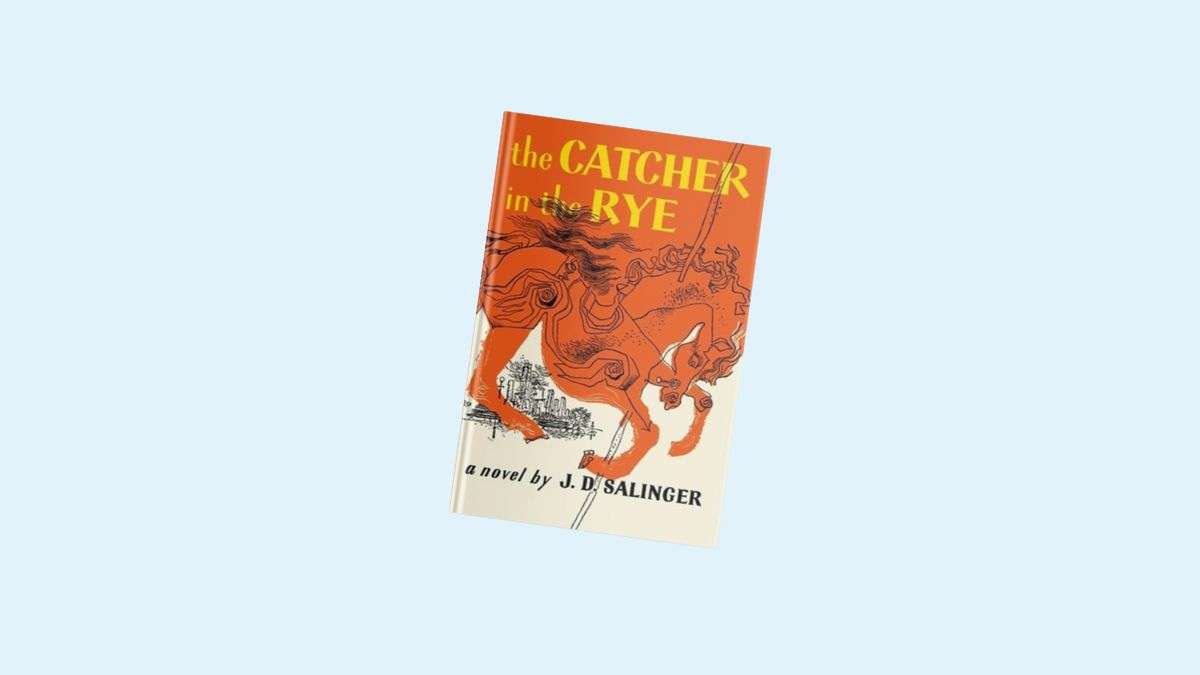Table of Contents
- Introduction
- Themes of Alienation and Identity
- Lessons on Authenticity and Individuality
- Understanding Adolescence and Coming-of-age
- Apply Lessons from The Catcher in the Rye
Introduction
The write-up explores important lessons from The Catcher in the Rye, a literary classic by J.D. Salinger. The novel is known for its memorable protagonist, Holden Caulfield, and its themes of alienation, rebellion, and the challenges of adolescence.
The story follows Holden’s experiences over a few days after he is expelled from boarding school, capturing his cynical perspective on the “phony” adult world. While the novel initially received mixed reviews, it has since been acclaimed for its insightful portrayal of teenage angst and coming-of-age struggles that continue to resonate with modern readers across generations.
In exploring this seminal work of American literature, there is much-hidden wisdom to uncover about the human experience. By analyzing Holden Caulfield’s internal journey and his external conflicts with societal expectations, valuable lessons can be found on authenticity, mental health, connection, and the universal process of growing up.
This article delves deeper into the key lessons from The Catcher in the Rye and reflects on the poignant insights it offers if we are willing to look beneath the surface. The aim is to highlight examples of the novel’s timeless and moving messages that can enrich our understanding of ourselves and the world around us.
Over the next sections, we will analyze Holden’s perspective and experiences to gain insight into the deeper struggles of adolescence and early adulthood. We will see how the novel examines complex dynamics related to identity, conformity, isolation, and mental health. While the story is set in a different era, its core themes around authenticity, connection, and the human experience continue to resonate. By exploring the hidden wisdom in this literary classic, we can uncover lessons that are profoundly relevant in our lives today.
Themes of Alienation and Identity
The protagonist of The Catcher in the Rye, Holden Caulfield, is portrayed as an isolated and disaffected teenager struggling to find his place in the world. Throughout the novel, Holden grapples with feelings of loneliness, depression, and an inability to connect with others around him.
Holden’s Alienation and Identity Crisis
Holden frequently expresses how isolated and separated he feels from society. He sees himself as an outsider who doesn’t fit in with his peers or meet societal expectations. This leads to an intense identity crisis for Holden as he struggles to figure out who he is and what he stands for. His alienation is exacerbated by the death of his younger brother Allie, an event that leaves Holden grief-stricken and withdrawn emotionally.
Impact of Societal Expectations
Holden often clashes with societal norms and expectations of young men his age. He resists the pressure to conform, which further ostracizes him. Holden views the adult world as full of hypocrisy and phoniness, qualities he disdains. As he searches for meaning and authentic human connection, the gap widens between societal expectations and Holden’s desire to preserve innocence in himself and others.
Cross-generational Resonance
These themes of alienation and identity crisis resonate powerfully for readers across generations. Many adolescents see their struggles mirrored in Holden’s character. His feelings of being misunderstood and out of place are universally relatable. Holden’s resistance against societal phoniness also connects with youth rebelling against mainstream culture and norms. This timeless quality is why The Catcher in the Rye remains relevant for young readers today, over 60 years after its publication.
Lessons on Authenticity and Individuality
The journey towards self-discovery often involves seeking authenticity in a world that can seem phony or superficial. As Holden Caulfield wanders through New York, he is constantly disappointed by the people and places around him that fail to meet his desire for genuineness. His quest to find something real is one that many adolescents and young adults grapple with as they try to figure out who they are apart from societal expectations.
Delving into the Search for Authenticity
Holden wants connection but has trouble finding people to whom he can relate. He sees right through facades and calls out “phoniness” wherever he encounters it. His search for authenticity reflects a universal human need—to find meaning and truth in oneself and life. However, Holden struggles to balance his desire for genuineness with the realities of an imperfect world. His journey reveals the challenges of seeking authenticity amidst superficiality.
Examining Holden’s World-weary Disillusionment
As he interacts with former classmates, Holden is repeatedly disappointed by their shallowness and lack of originality. He criticizes them for conforming to social codes that require hiding their true personalities. His disdain for “fake” social rituals reveals his desire for real human connection. Holden’s world-weary disillusionment shows that the gap between an authentic self and an artificial world can be difficult to bridge.
How Embracing Individuality Leads to Growth
Although he struggles to apply it, Holden understands that conforming to others’ expectations will not lead to fulfillment. His rejection of social facades in favor of his unique self shows the importance of embracing individuality. Though nonconformity often includes isolation and loneliness, it can eventually lead to personal growth, self-awareness, and interpersonal connection grounded in authenticity. Holden’s journey reveals that discovering one’s distinctive identity is essential for true understanding between individuals.
Understanding Adolescence and Coming-of-age
The Catcher in the Rye poignantly captures the tumultuous period of adolescence. Protagonist Holden Caulfield’s journey mirrors teenagers’ challenges as they transition into adulthood. Through Holden’s eyes, Salinger explores complex themes like identity, belonging, authenticity, and mental health.
Holden struggles with fitting into society’s mold. He grapples with others’ expectations of who he should be versus his desire to preserve his individuality. Holden wants to cling to childhood innocence, as seen in his fantasy of being the “catcher in the rye” who saves children. However, the adult world encroaches on societal pressures. Readers connect with Holden’s plight of navigating a complex world while staying true to oneself.
Teenage Angst and Rebellion
The author, Salinger, vividly renders the teenage condition through Holden. We see his cynicism about societal phoniness. Since its publication, The Catcher in the Rye has offered a rich tableau of themes and motifs that continue to resonate with readers, young and old alike. At the heart of J.D. Salinger’s novel is the universal experience of adolescence—fraught with confusion, disillusionment, and a struggle for identity.
One of the key lessons from The Catcher in the Rye is the inevitable loss of innocence. The protagonist, Holden Caulfield, wrestles with the realization that he cannot protect himself or others from the complexities of adulthood. This loss is metaphorically encapsulated in Holden’s fantasy of being a hero of sorts, saving children from falling off a cliff—a cliff symbolizing the descent into the phony, superficial, and corrupt world of adults. The desire to preserve innocence is a powerful force in Holden’s narrative. It invites readers to reflect on their transitions from childhood to the adult world.
Furthermore, the novel unveils the intense difficulty of meaningful communication. Holden often cannot articulate his deepest fears and desires, leading to profound isolation. This reflects a broader social commentary on the human condition; our frequent inability to truly connect is a source of existential dread and loneliness. The novel’s dialogue reflects the complexity of human interaction, where what is left unsaid is just as important as the words exchanged.
The Catcher in the Rye prompts readers to consider the authenticity of the self. Holden’s contempt for society’s “phony” aspects mirrors his inner turmoil and desire for a more genuine existence. The book’s exploration of authenticity raises questions about individuals’ roles and the masks they wear daily. It critically examines the mechanisms through which social conformity is enforced and suggests that true freedom comes from embracing one’s uniqueness, even at the cost of alienation.

The novel also navigates through the pain of grief and how individuals cope with loss. Holden’s story is one not just of a young man rebelling against the world around him but also one who is reeling from the death of his younger brother, Allie. Holden’s refusal to accept the permanence of death and his resulting behaviors demonstrate the complexity of the grieving process. The narrative illustrates that grief can manifest in numerous ways, often unpredictable and deeply intertwined with other facets of mental health.
Lastly, The Catcher in the Rye meditates on growing up. Holden’s journey encapsulates a critical moment of transition, where he stands on the threshold between two worlds. His struggles—balancing cynicism and hope, navigating complex relationships, determining moral values, and finding purpose—symbolize the broader human experience. As such, this narrative continues to be a compelling guide for those navigating the passage from youth into adulthood.
Apply Lessons from The Catcher in the Rye
In exploring the lessons from The Catcher in the Rye, the various interpretations that readers have taken away attest to the complexity and depth of the novel. A key lesson revolves around the theme of adolescence and the struggle between childhood innocence and adult life’s complexities, as navigated by the protagonist, Holden Caulfield. His journey reflects a physical wandering and an internal quest for identity, purpose, and connection.
Although set in the 1950s, the narrative captures timeless challenges posed by societal expectations and transitions into maturity. Furthermore, the novel underscores the importance of empathy and genuine human connection in a world often masked by superficiality and pretense.
However, one may assert that Salinger’s work’s truest lesson lies not in a definitive moral or message but rather in its capacity to provoke thought and discussion about the human condition. Whether one views Holden’s actions as a cry for help in a conformist society or a refusal to surrender to the phony aspects of adulthood, the novel’s impacts are as varied as its readers.
Salinger’s avoidance of offering any clear resolution emphasizes the novel’s focus on individual perspective and interpretation. It also mirrors the reality of life’s ambiguities, a reminder that not all journeys have clear destinations and that sometimes the value lies in the search itself.
In reflecting upon The Catcher in the Rye, it becomes evident that the novel is not merely a story about a young man’s weekend in New York City but a literary touchstone that speaks to the turbulent journey toward self-realization. This journey is both profoundly personal and universally resonant.
